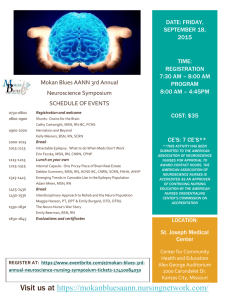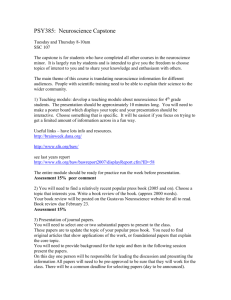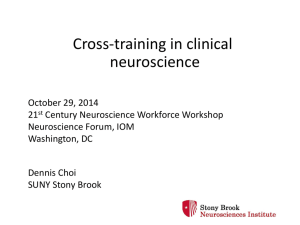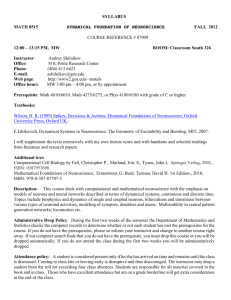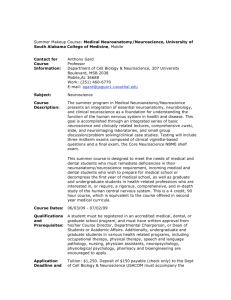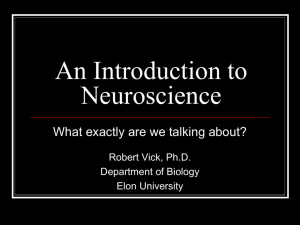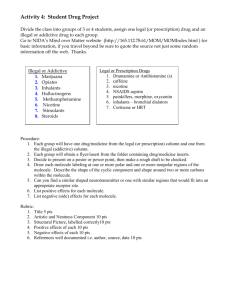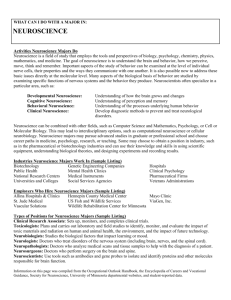A review of neuroscience nursing research from 1960 to 1988
advertisement
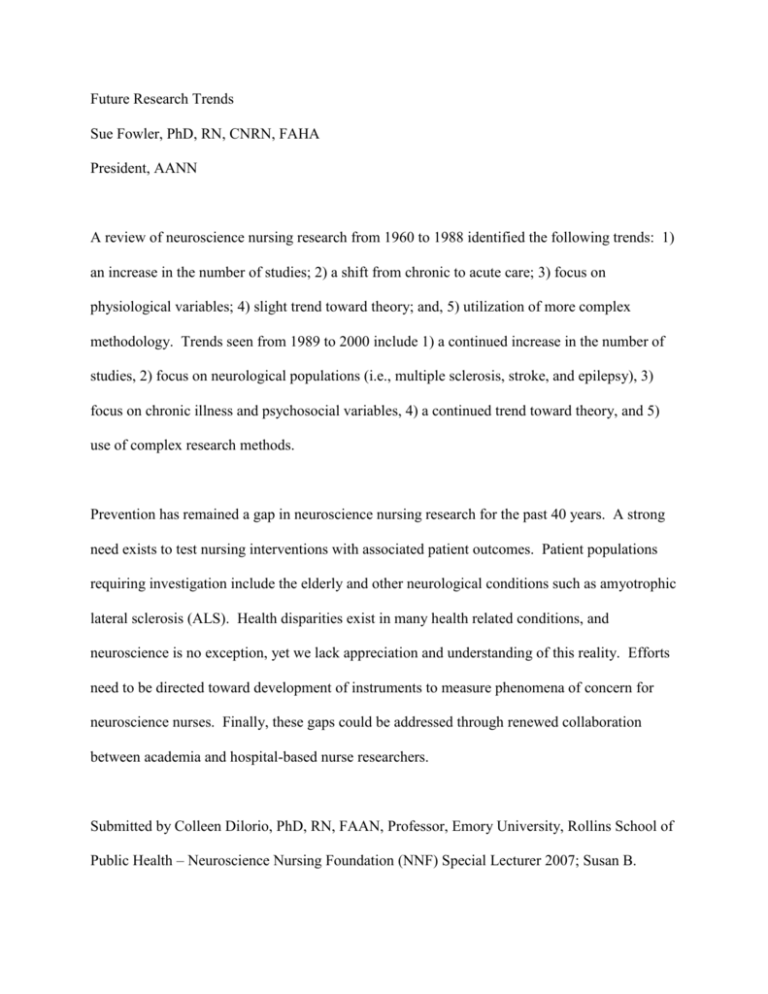
Future Research Trends Sue Fowler, PhD, RN, CNRN, FAHA President, AANN A review of neuroscience nursing research from 1960 to 1988 identified the following trends: 1) an increase in the number of studies; 2) a shift from chronic to acute care; 3) focus on physiological variables; 4) slight trend toward theory; and, 5) utilization of more complex methodology. Trends seen from 1989 to 2000 include 1) a continued increase in the number of studies, 2) focus on neurological populations (i.e., multiple sclerosis, stroke, and epilepsy), 3) focus on chronic illness and psychosocial variables, 4) a continued trend toward theory, and 5) use of complex research methods. Prevention has remained a gap in neuroscience nursing research for the past 40 years. A strong need exists to test nursing interventions with associated patient outcomes. Patient populations requiring investigation include the elderly and other neurological conditions such as amyotrophic lateral sclerosis (ALS). Health disparities exist in many health related conditions, and neuroscience is no exception, yet we lack appreciation and understanding of this reality. Efforts need to be directed toward development of instruments to measure phenomena of concern for neuroscience nurses. Finally, these gaps could be addressed through renewed collaboration between academia and hospital-based nurse researchers. Submitted by Colleen Dilorio, PhD, RN, FAAN, Professor, Emory University, Rollins School of Public Health – Neuroscience Nursing Foundation (NNF) Special Lecturer 2007; Susan B. Fowler, PhD, RN, CNRN, FAHA, President, American Association of Neuroscience Nurses 2007-8




